Grace/Stardust, 18+Dumpster fire of stuff I like, multifandom(Sorry to everyone who has asks waiting in my inbox I have not forgotten about them OTL)
Don't wanna be here? Send us removal request.
Text
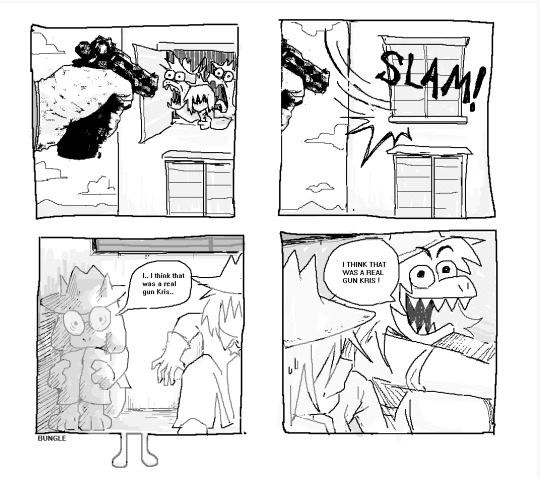
surely this is not safe for tv
#Sobbing#Kris I think that was a real gun#deltarune#deltarune spoilers#kris dreemurr#susie deltarune#Ralsei#gun
8K notes
·
View notes
Text
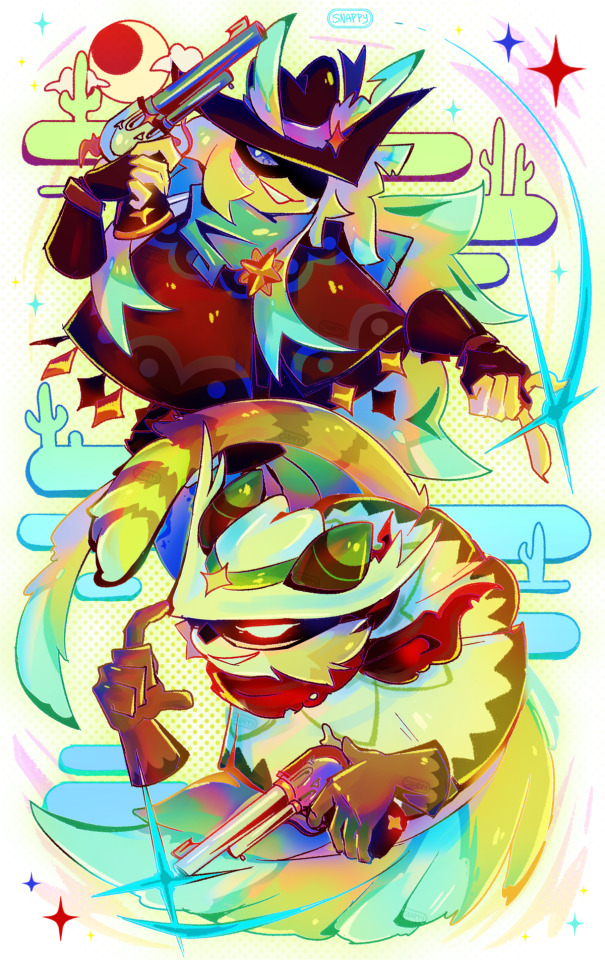
Art Fight 2025
Attack on @starcrownest and @a-stardusted-sky of their cowboys Apollo and Peacekeeper!
You can fight me here >:D
#SCREECHES#CRIES#EXPLODES#WAAAAAAA SNAPPY YOU NEVER MISS#WAAAAAAAAAAAAA ITS PEAK#art fight 2025#oc: apollo#oc: peacekeeper#my ocs#others ocs#(oh god I haven’t introduced Peacekeeper to tumblr OOPS)
39 notes
·
View notes
Text
[ Deltarune ] - TV Doily
I feel like Toriel would talk to her furniture as she cleans.
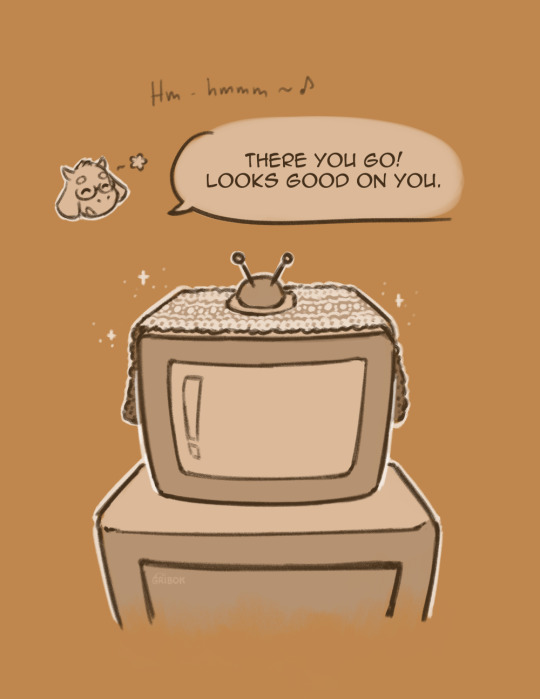

8K notes
·
View notes
Text
you have to stay alive. you're going to be such a beautiful middle aged freak. young freaks will see you in the street and know that things can be okay.
213K notes
·
View notes
Text

[ Deltarune ] - Strike!
Has this been done yet ?
I treated myself to a graphic tablet with a screen, I'm so back
1K notes
·
View notes
Text

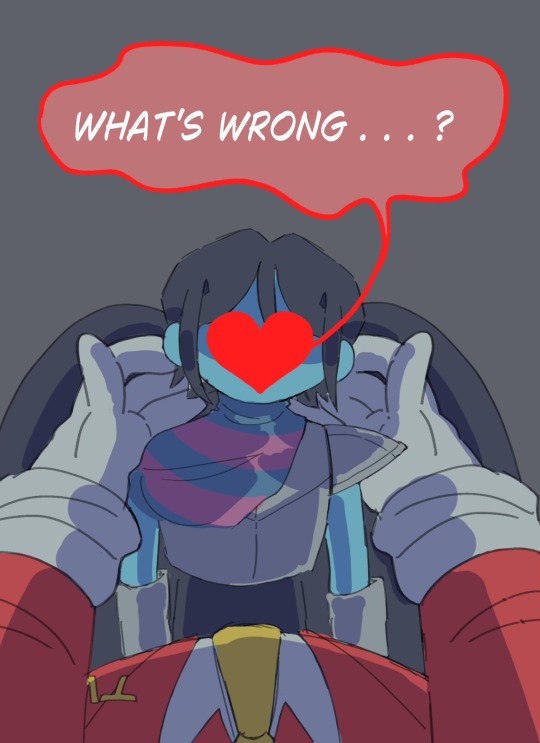
Hiiiii @sweetnsourstufff I drew some more fanart for your fic :D I’m loving it so much everybody go read this fic!!!!
God platonic physical contact makes me lose my mind and this fic does it so well. Everybody just needs to hug and cry for a good long while.
86 notes
·
View notes
Text

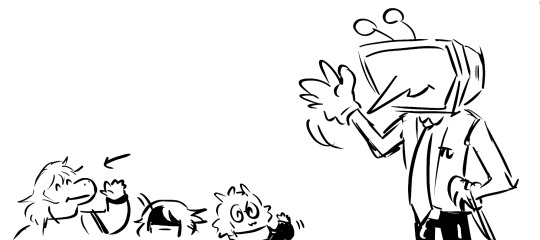
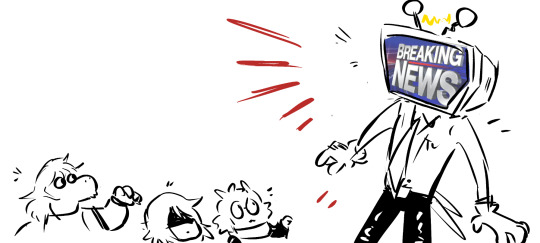

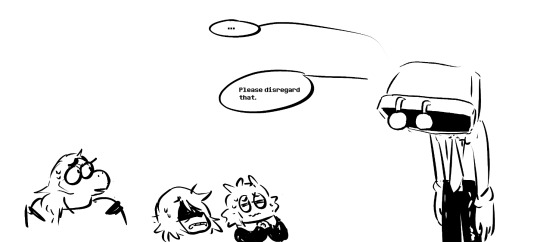
poor quality joke i spent too much time on the other day lol
#😭😭😭 HELP#deltarune#deltarune chapter 3#tenna#deltarune tenna#tenna deltarune#susie deltarune#Ralsei#kris dreemurr#suicide mention
13K notes
·
View notes
Text




4 artworks, same cat✨ A little resume of my latest cosmic star cat arts /ᐠ˵- ⩊ -˵マ Wallpapers? Yes... link!
1K notes
·
View notes
Text
Unhealed Wounds Your Character Pretends Are Just “Personality Traits”
These are the things your character claims are just “how they are” but really, they’re bleeding all over everyone and calling it a vibe.
╰ They say they're "independent." Translation: They don’t trust anyone to stay. They learned early that needing people = disappointment. So now they call it “being self-sufficient” like it’s some shiny badge of honor. (Mostly to cover up how lonely they are.)
╰ They say they're "laid-back." Translation: They stopped believing their wants mattered. They'll eat anywhere. Do anything. Agree with everyone. Not because they're chill, but because the fight got beaten out of them a long time ago.
╰ They say they're "a perfectionist." Translation: They believe mistakes make them unlovable. Every typo. Every bad hair day. Every misstep feels like proof that they’re worthless. So they polish and polish and polish... until there’s nothing real left.
╰ They say they're "private." Translation: They’re terrified of being judged—or worse, pitied. Walls on walls on walls. They joke about being “mysterious” while desperately hoping no one gets close enough to see the mess behind the curtain.
╰ They say they're "ambitious." Translation: They think achieving enough will finally make the emptiness go away. If they can just get the promotion, the award, the validation—then maybe they’ll finally outrun the feeling that they’re fundamentally broken. (It never works.)
╰ They say they're "good at moving on." Translation: They’re world-class at repression. They’ll cut people out. Bury heartbreak. Pretend it never happened. And then wonder why they wake up at 3 a.m. feeling like they're suffocating.
╰ They say they're "logical." Translation: They’re terrified of their own feelings. Emotions? Messy. Dangerous. Uncontrollable. So they intellectualize everything to avoid feeling anything real. They call it rationality. (It's fear.)
╰ They say they're "loyal to a fault." Translation: They mistake abandonment for loyalty. They stay too long. Forgive too much. Invest in people who treat them like an afterthought, because they think walking away makes them "just as bad."
╰ They say they're "resilient." Translation: They don't know how to ask for help without feeling like a burden. They wear every bruise like a trophy. They survive things they should never have had to survive. And they call it strength. (But really? It's exhaustion wearing a cape.)
18K notes
·
View notes
Text
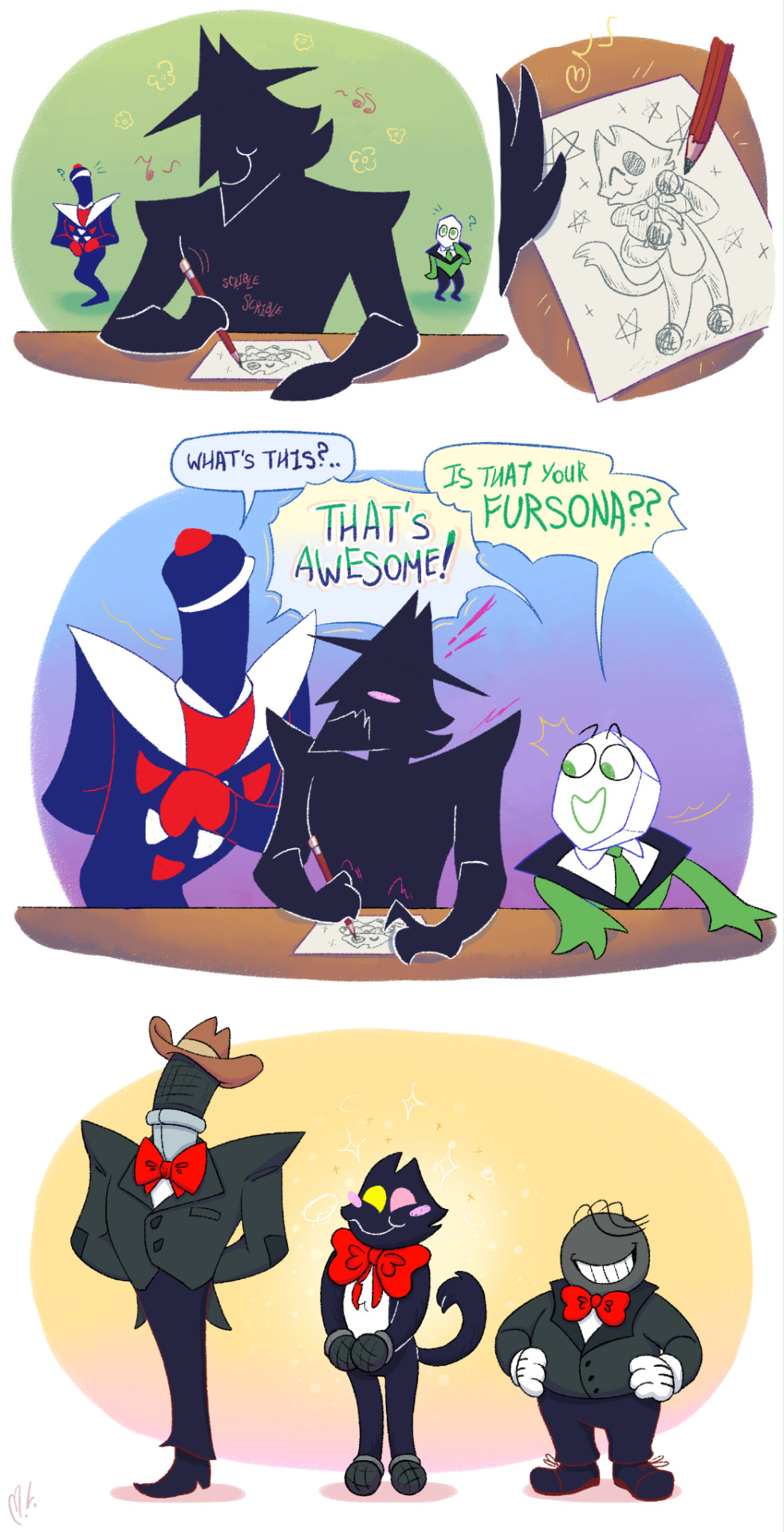
My first ever time doing a little comic like this, but I really like how it turned out 😌
#hell yeah#cringe is dead!#Love the subversion of support here#deltarune#mike deltarune#deltarune pluey#deltarune shadowguy#deltarune pippins#deltarune zapper
4K notes
·
View notes
Text
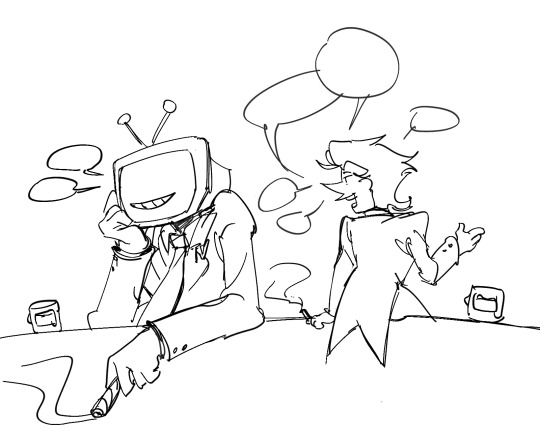
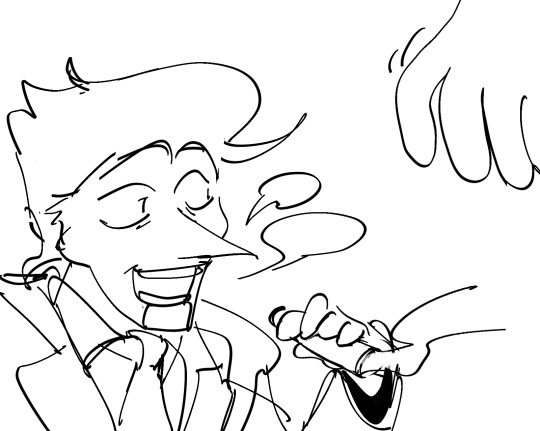
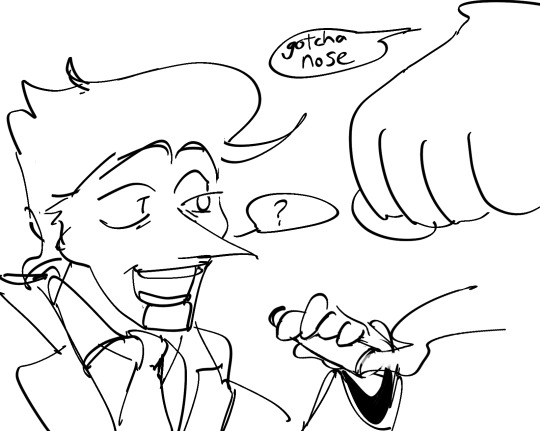
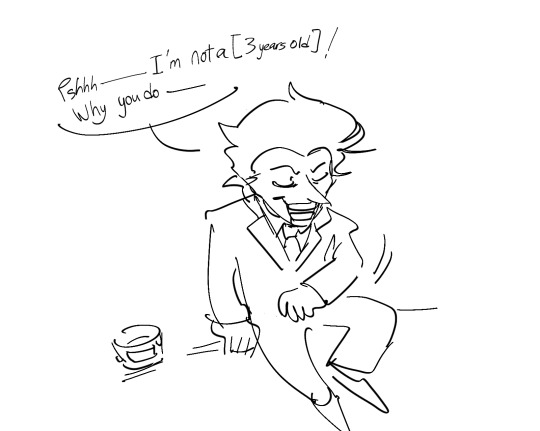
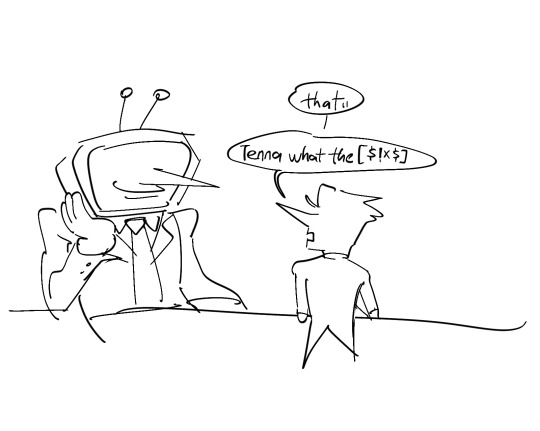
The nose got [COPY AND PASTE]
4K notes
·
View notes
Text
jackenstein being the tutorial for the titan fight because play/pretend can help prepare you for actual hard/difficult times… and jackenstein is a Halloween decoration… the holiday entirely based on playing with scary/uncomforting things… runs into a wall and leaves a me shaped impression
4K notes
·
View notes
Text
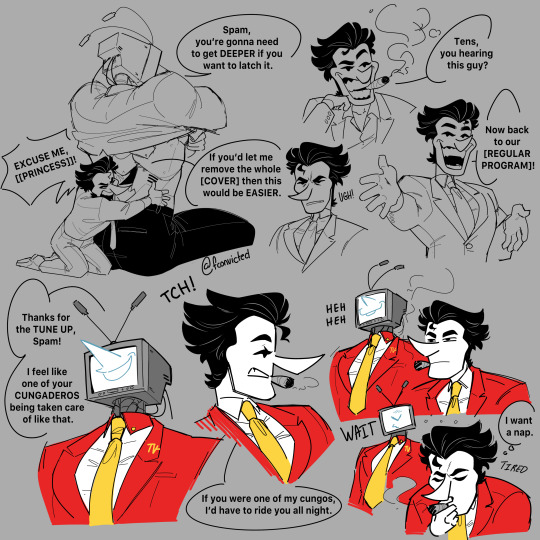
idiots in love
2K notes
·
View notes
Text
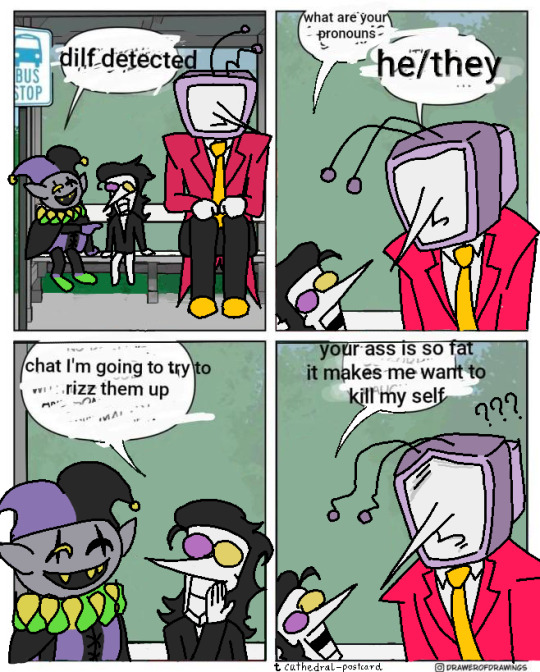
they disgust me
4K notes
·
View notes
Text
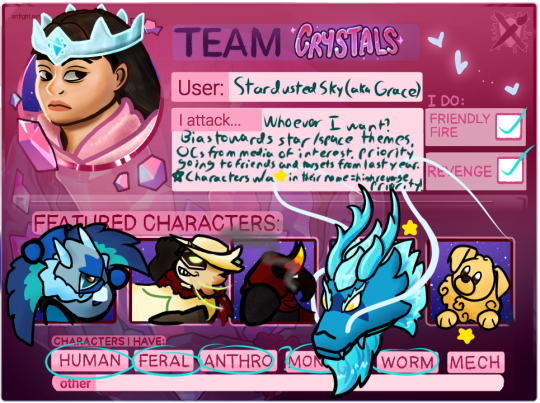
Hi I’m doing ArtFight again, I’m hoping to do more attacks this year so come and check me out.
https://artfight.net/~StardustedSky
4 notes
·
View notes
Note
CATCH!
🪨
@ask-the-chaoschaos
510 notes
·
View notes
Text

3K notes
·
View notes